|
Rio San Martin
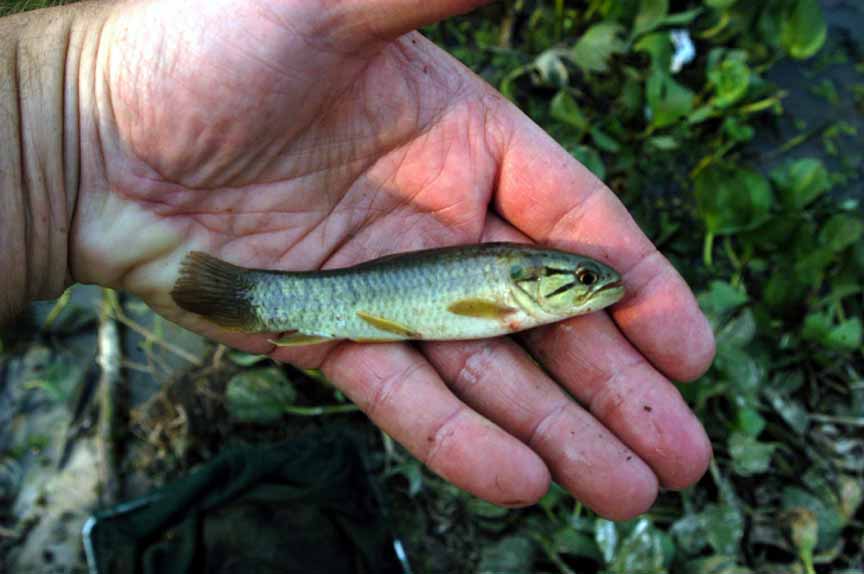
Erythrinus species like this one is sometimes a more appealing alternative to a big, moster Hoplias.
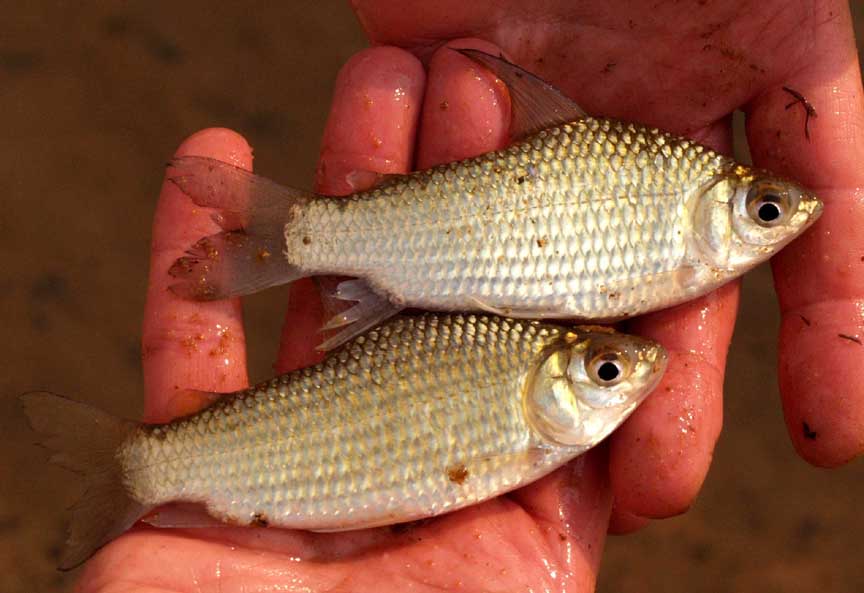
Curimatids ?? Whatever they are, they were nice and fat. They would have made excellent dithers in a cichlid tank if only I had unlimited space to bring them back!
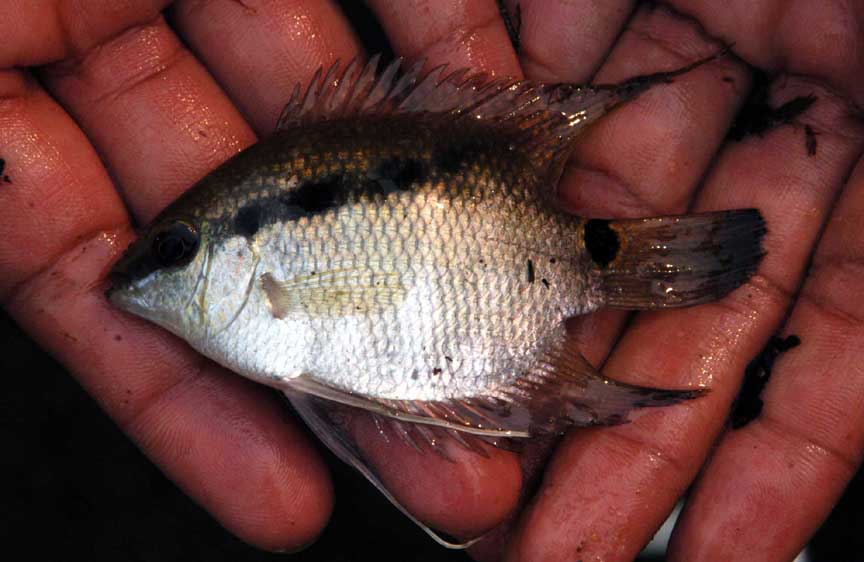
The true Mesonauta festivus. This species is found in the Bolivian Amazon and the middle and upper Paraguay basin. I have wild caught specimens of both this and M. guyanae at home and I find this species a less aggressive and much more yellow in color.

Aphyocharax sp. rathbuni?

One of a hundred unidentified characins that we encountered.
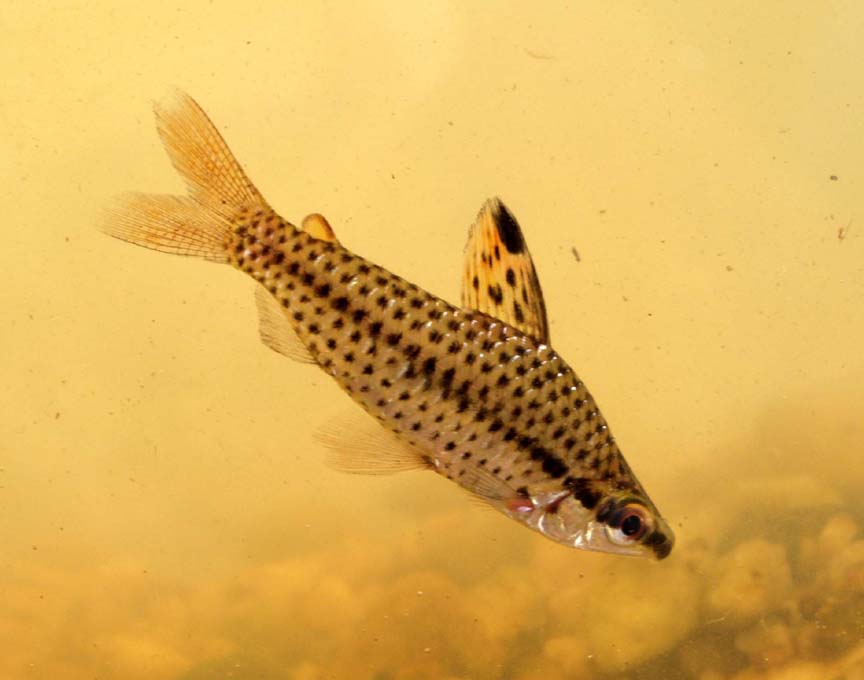
Chilodus cf. punctatus.

One of many Hemiodus-type species found in Rio San Martin.

Apistogramma trifasciata is less common than A. similis, but they are still quite easy to catch in the lakeside leaf litter and and floating grass beds in the main river channel.
So what about A. maciliensis and A. sp. Mamore, you ask. Well, I'm not an Apisto buff, but here is what I know: 3 members of the trifasciata-group (A. trifasciata, A. maciliensis, & A. sp. Mamore) can be
found in the Rio Mamore/Guapore basin, but I dont think they are found together. A. maciliensis is supposed to be found in Rio San Martin and the lakes near it, but I dont think we saw any. The true A. trifasciata is supposed to be found closer to Paraguay. And A. sp. Mamore is said to be limited to Rio Mamore.
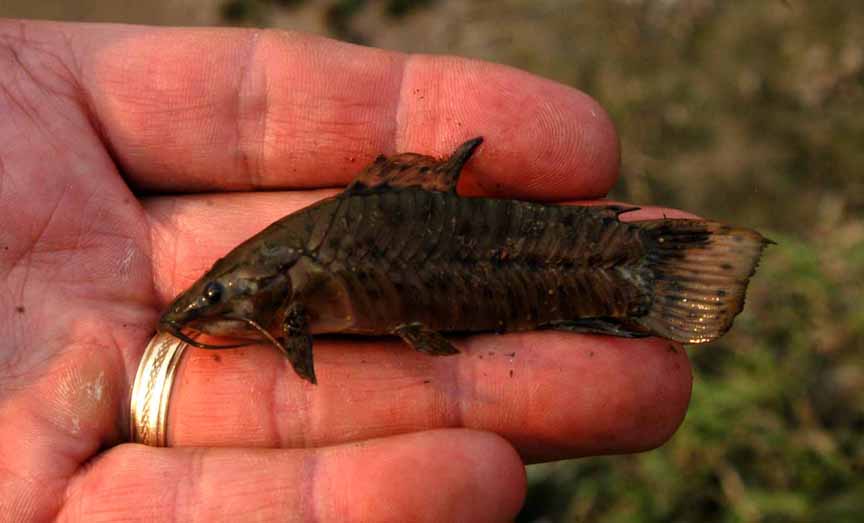
Hoplosternum cf. thoracatum? is found a bit more frequently in the savannah.
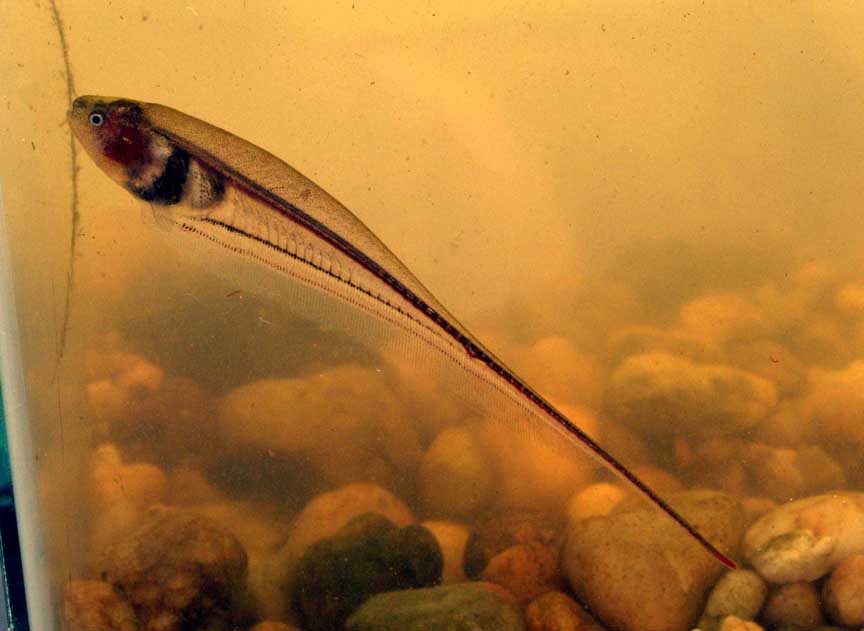
Eigenmannia viriscens ?? is found in leaf litter with Citrus pikes and Apistos.
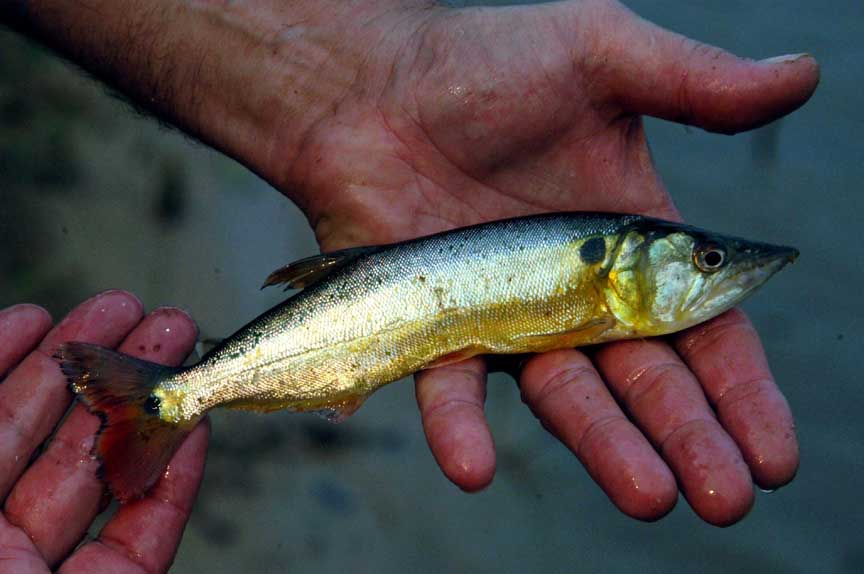
Acestrorhynchus cf. altus.

Cichla pleiozona (it was undescribed when Jeff caught it in 2004).

Adult Cichla pleiozona. They are unique among Peacock bass species in having a prominent vertical bar on the caudal peduncle. It is not easy to see in these stressed specimen, but the bar is indeed there.
All photos by J. Cardwell, S. Jack and V. Kutty
|

